1
Saint John in the 1800's was a prosperous shipping port. Most of the goods sent to Britain and other countries from New Brunswick passed through the port. Local businessmen believed the city was the ideal place for the terminus of a rail line with Central Canada. A railway ending in Saint John would allow Central Canadian Business to ship goods year round through Saint John's ice free port. The city was large enough to handle the freight and much closer than Halifax. However, when the British authorities commissioned the surveying of a route in 1848 by Major Robinson they chose a route through northern New Brunswick with the terminus of the line at Halifax. This route was chosen so that the line was as far away as possible from the American border. Another key reason for choosing this route was to provide access to a rail line for residents in eastern Quebec and along the lower part of the St. Lawrence. Following the decision to choose the route through Northern New Brunswick, the idea to build a line from Maine through Saint John and Moncton to connect with the future Intercolonial Railway line was proposed. This would allow manufacturers from Halifax, Moncton, and Saint John a faster way to ship goods to American markets. At the same time this would allow Saint John business to ship goods to Western Canada over the future Intercolonial Route. Construction of the European & North American Railway began in 1853, the same year that a free trade agreement with the United States went into effect. By 1855 little work had been completed and rising costs meant that private investors could not build the line without government support. In 1856 the Provincial Government bought the line and agreed to guarantee any loans to the railway. Construction resumed and in 1857 the broad gauge track between Pointe-du-Chene and Moncton opened. At the same time construction began from Saint John towards Moncton and by 1860 the line was finished. The line which cost 5 million to build provided a fast efficient way to move freight from Pointe-du-Chene to Saint John. Although the freight trains were not very long, because the train often had to be split and hauled in two pieces, the trip was a mere 6 hours much faster than by ship. The line secured Saint John's place as the focal point for most of the trade by the Province even after the decline of the wooden ship era. However, since the line was never connected with Maine (although later lines would complete this connection) the line never fulfilled its primary goal, and so the line barely covered expenses. The line became part of the Intercolonial Railway system in 1869. In 1872 the line from Painsec Jct. to Truro was opened. A separate line from Truro to Halifax was already operating by this time. The entire Intercolonial line through New Brunswick was finished in 1876.2
European and North American Railway19th Century
New Brunswick, Canada
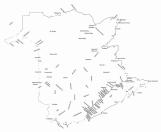 Credits:
Credits:New Brunswick Railway Museum
3
City of Moncton railway lines19th Century
Moncton, New Brunswick, Canada
 Credits:
Credits:New Brunswick Railway Museum
4
City of Saint John railway lines19th Century
Saint John, New Brunswick, Canada
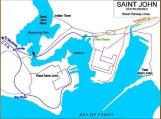 Credits:
Credits:New Brunswick Railway Museum
5
Apohaqui Station20th Century, Circa 1904
Apohaqui, New Brunswick, Canada
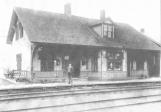 Credits:
Credits:New Brunswick Railway Museum
6
Saint John E&NA Station19th Century, Circa 1869
Saint John, New Brunswick, Canada
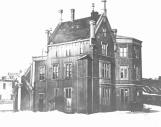 Credits:
Credits:New Brunswick Railway Museum
7
Hampton Station19th Century, Circa 1867
Hampton, New Brunswick, Canada
 Credits:
Credits:New Brunswick Railway Museum
8
Petitcodiac Station20th Century, Circa 1905
Petitcodiac, New Brunswick, Canada
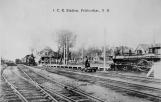 Credits:
Credits:New Brunswick Railway Museum
9
Painsec Station20th Century, Circa 1920
Painsec, New Brunswick, Canada
 Credits:
Credits:New Brunwick Railway Museum
10
Norton, New Brunswick20th Century, Circa 1905
Norton, New Brunswick, Canada
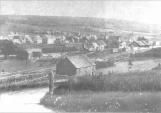 Credits:
Credits:New Brunswick Railway Museum
11
Shediac Station20th Century, Circa 1915
Shediac, New Brunswick, Canada
 Credits:
Credits:New Brunswick Railway Museum
12
Moncton E&NA Station19th Century, Circa 1875
Moncton, New Brunswick, Canada
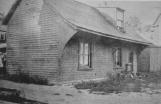 Credits:
Credits:New Brunswick Railway Museum
13
Saint John E&NA Roundhouse19th Century, Circa 1859
Saint John, New Brunswick, Canada
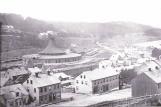 Credits:
Credits:New Brunswick Railway Museum
14
Pointe du Chene Station20th Century, Circa 1900
Pointe du Chene, New Brunswick, Canada
 Credits:
Credits:New Brunswick Railway Museum